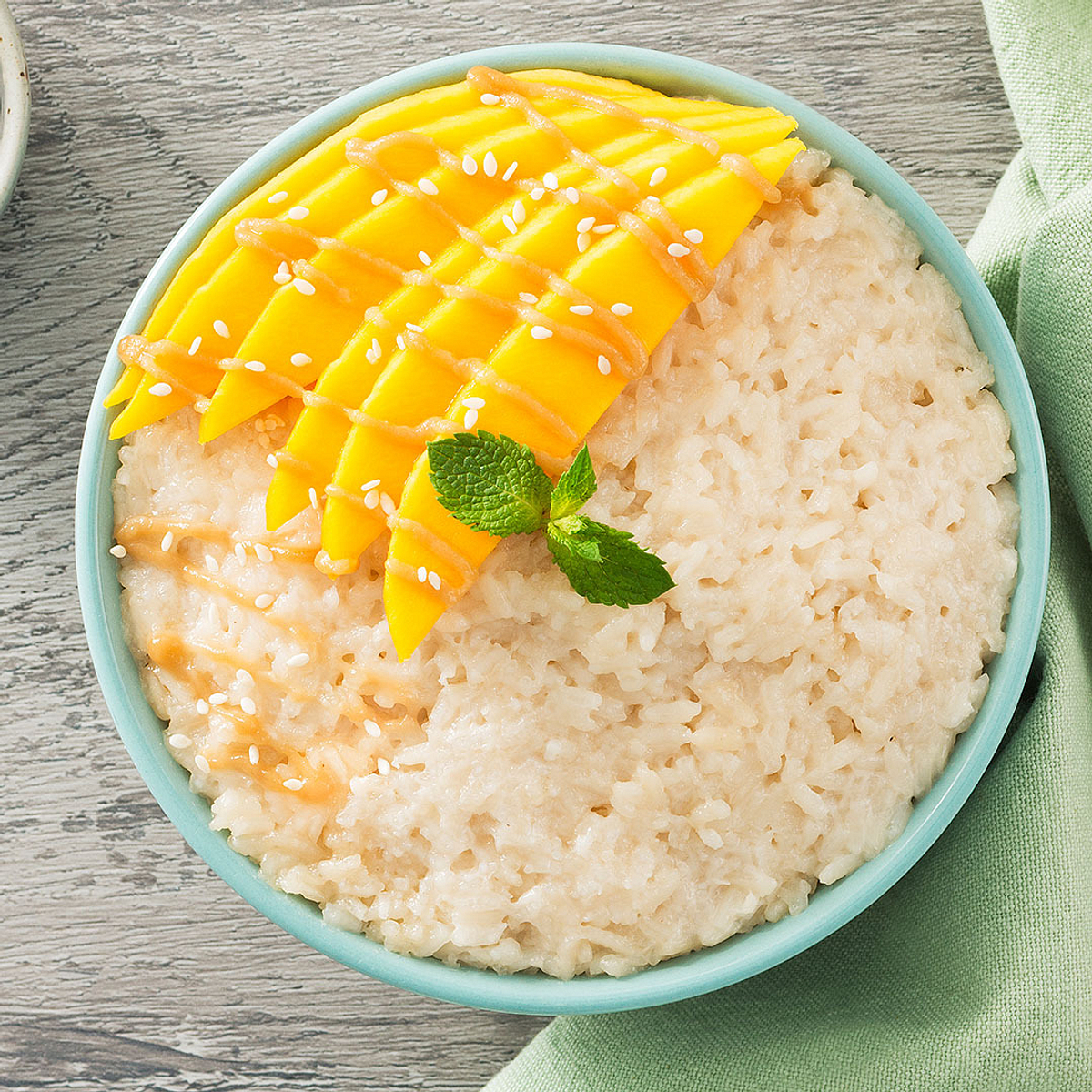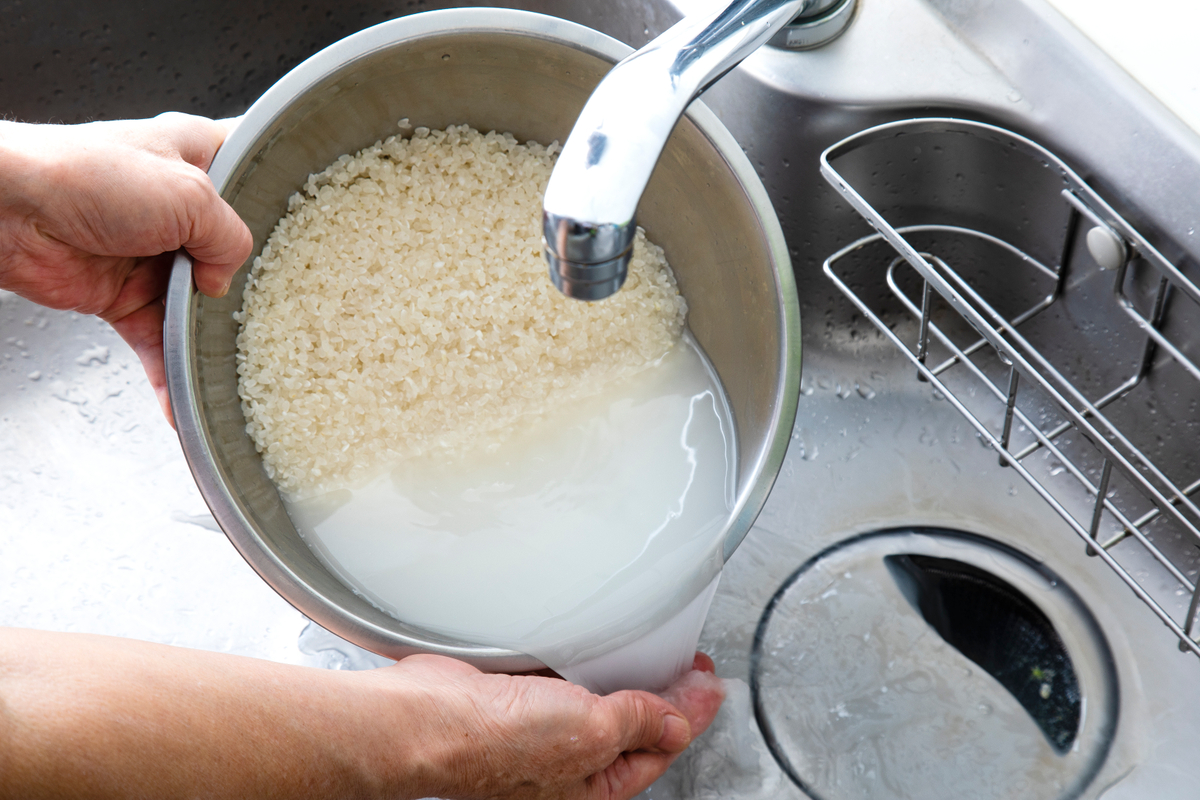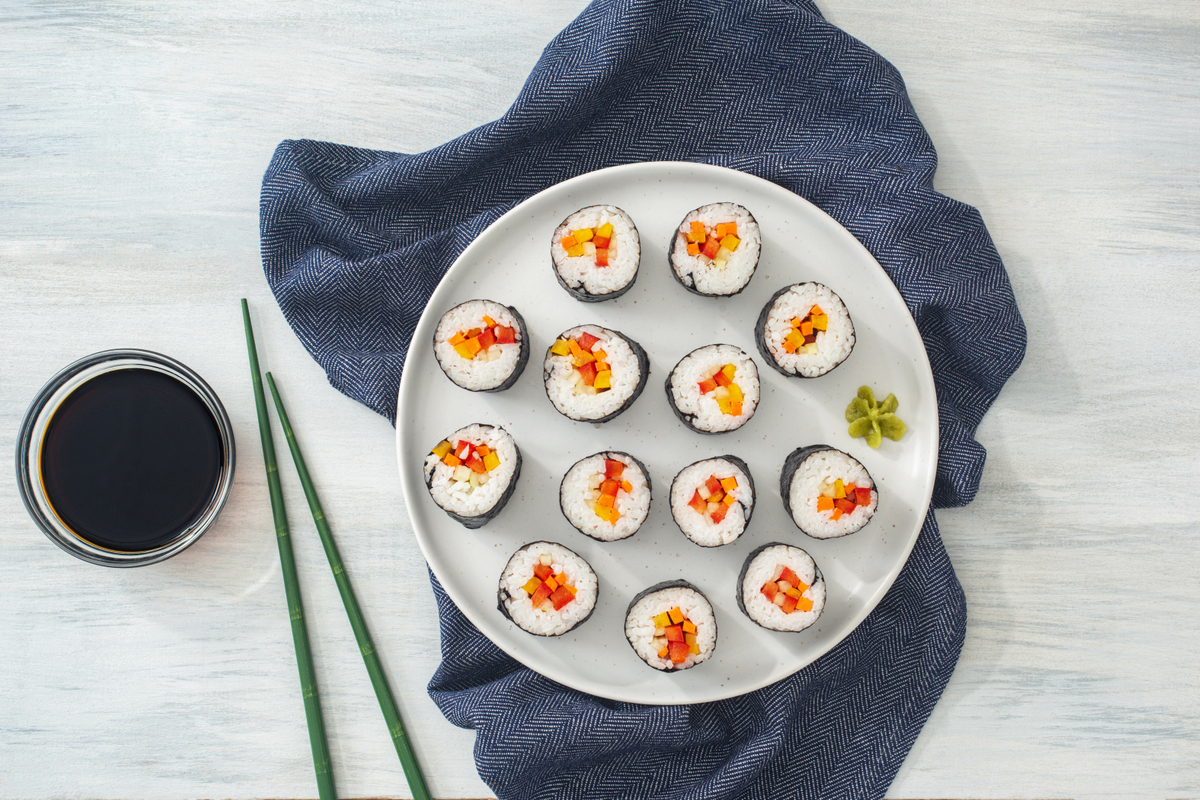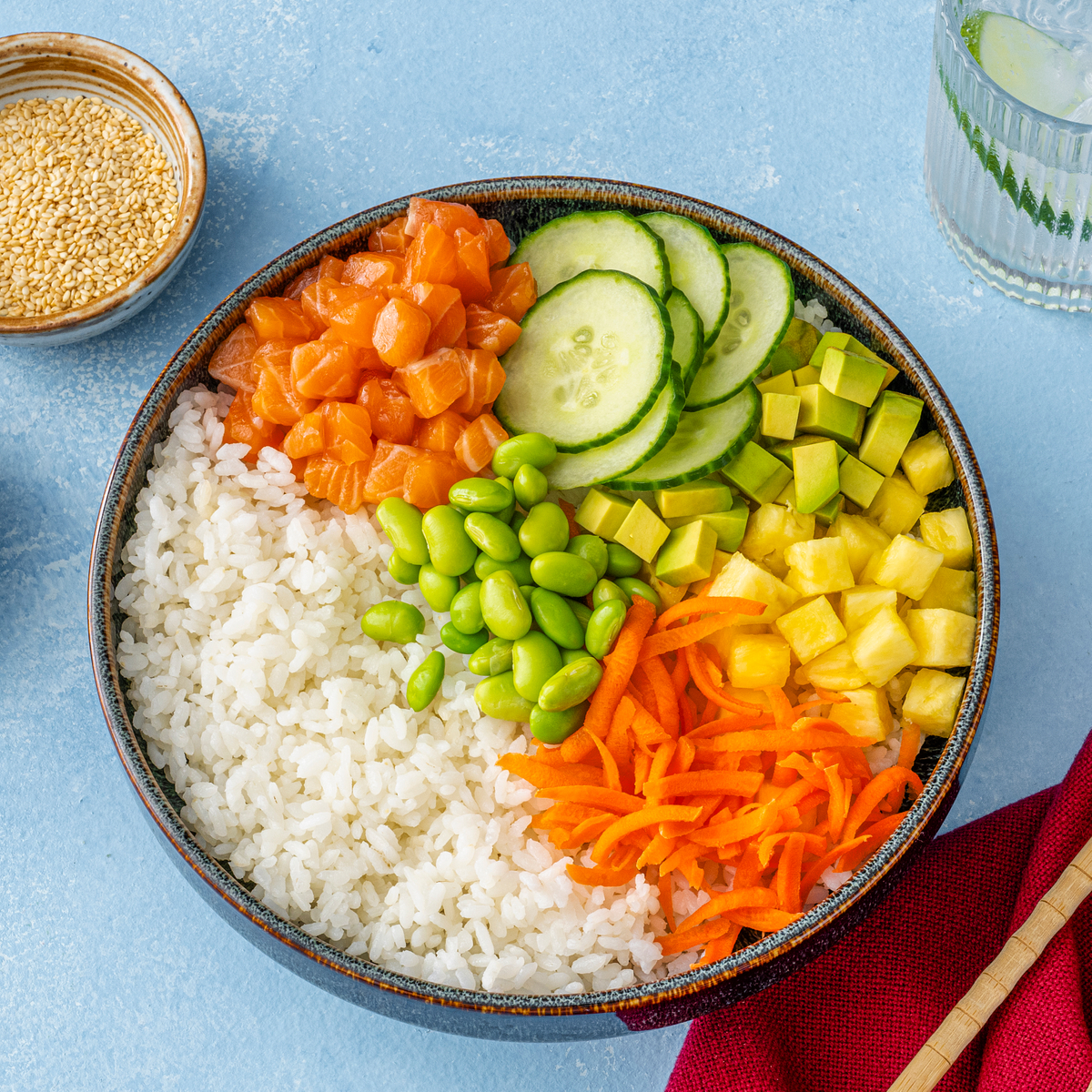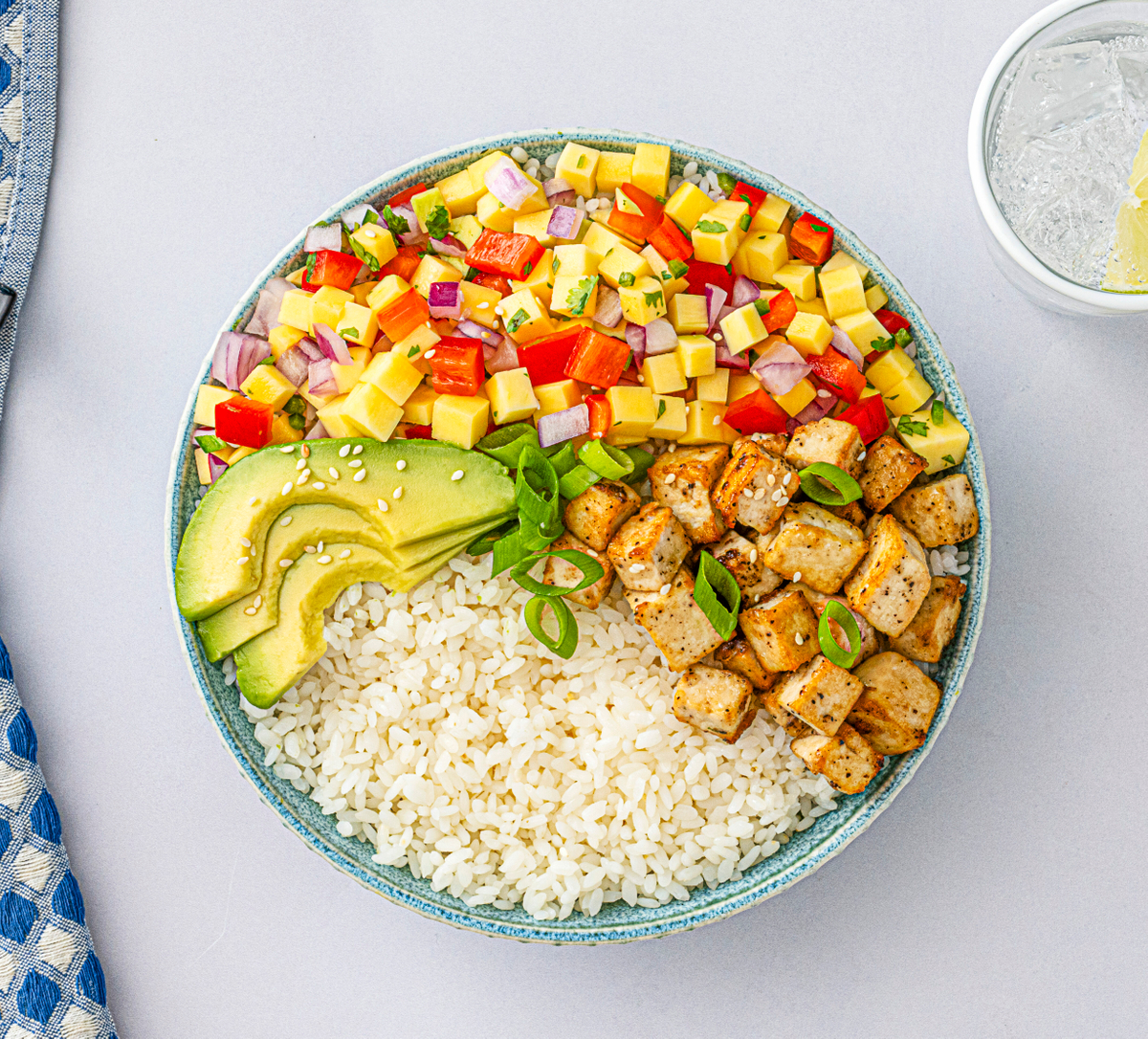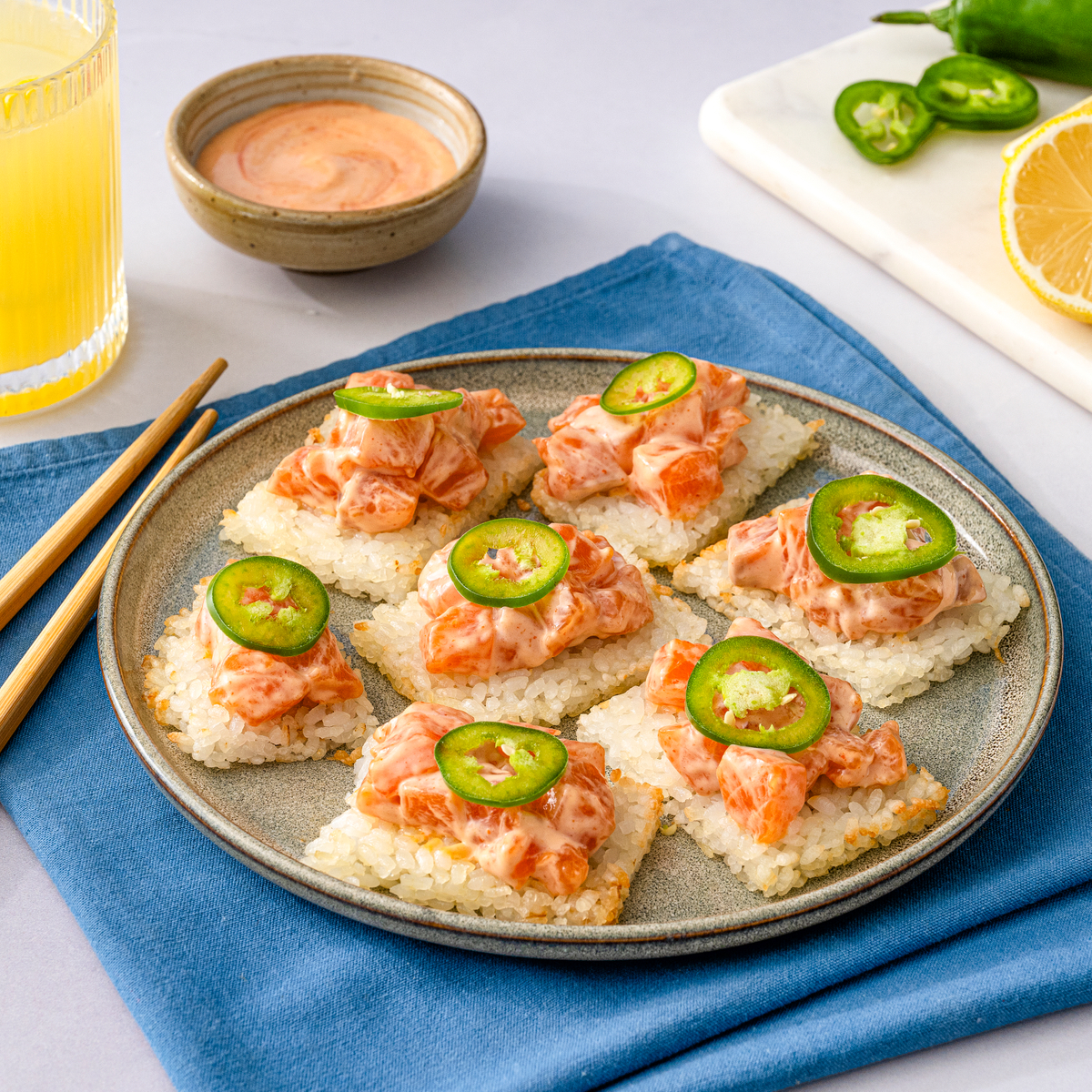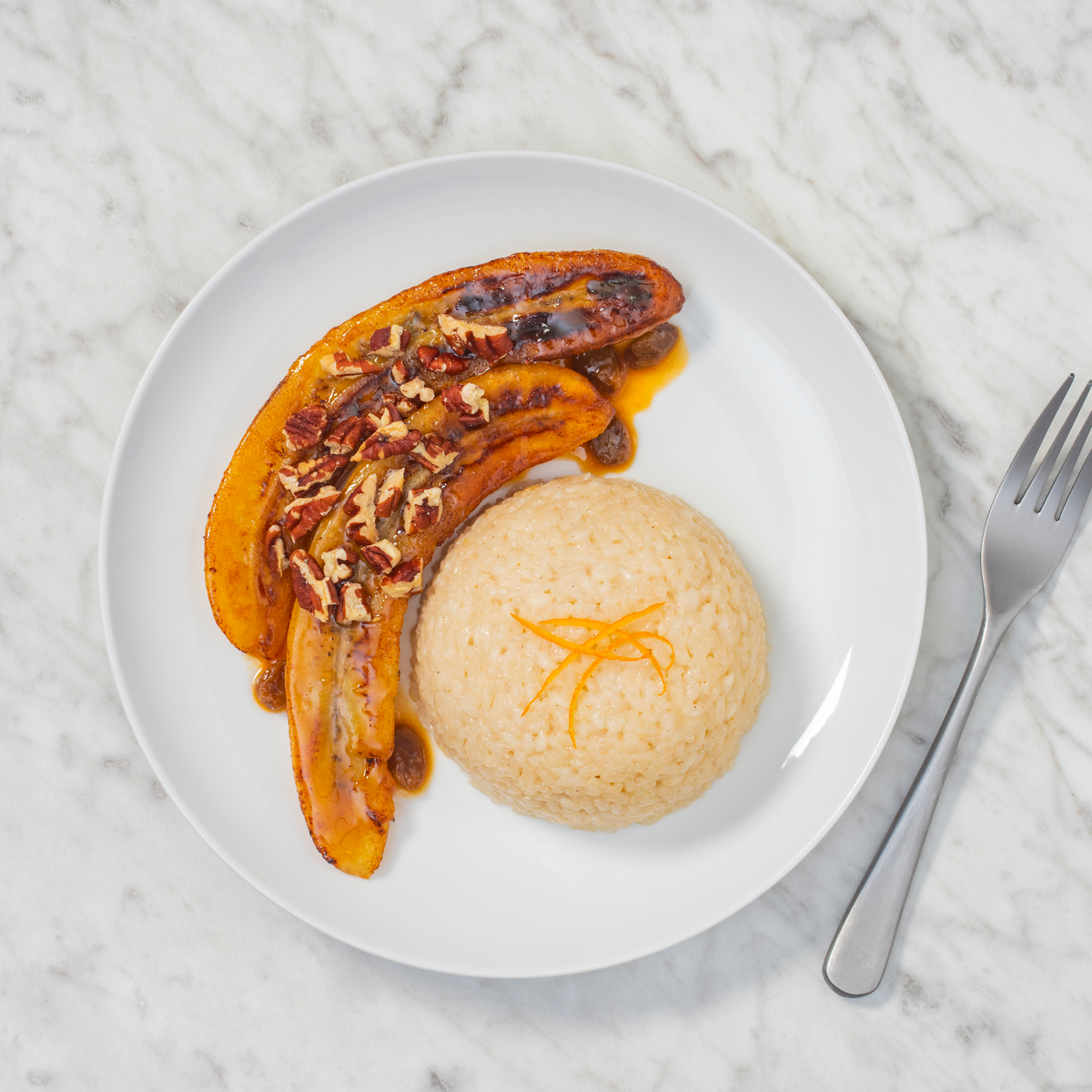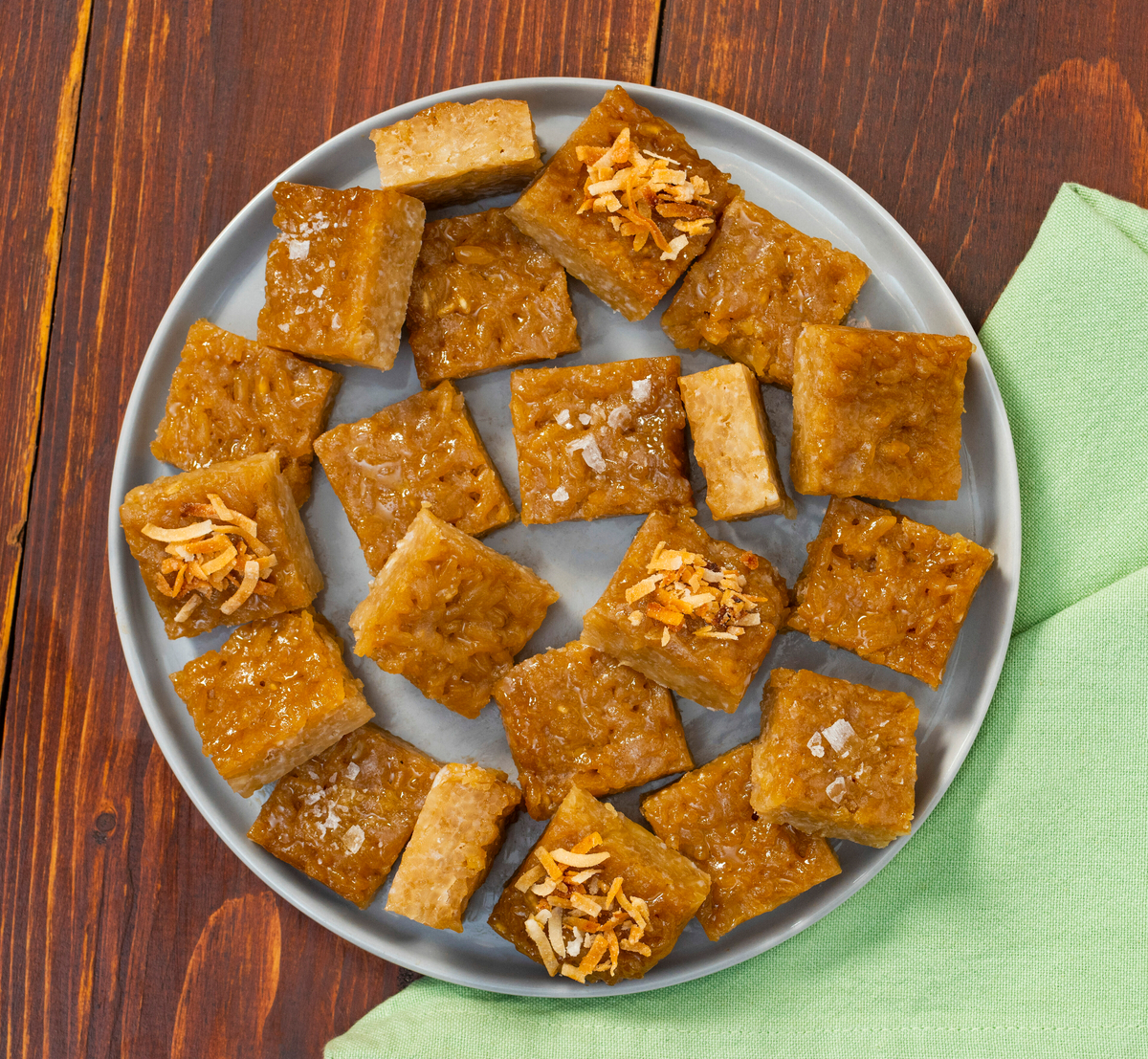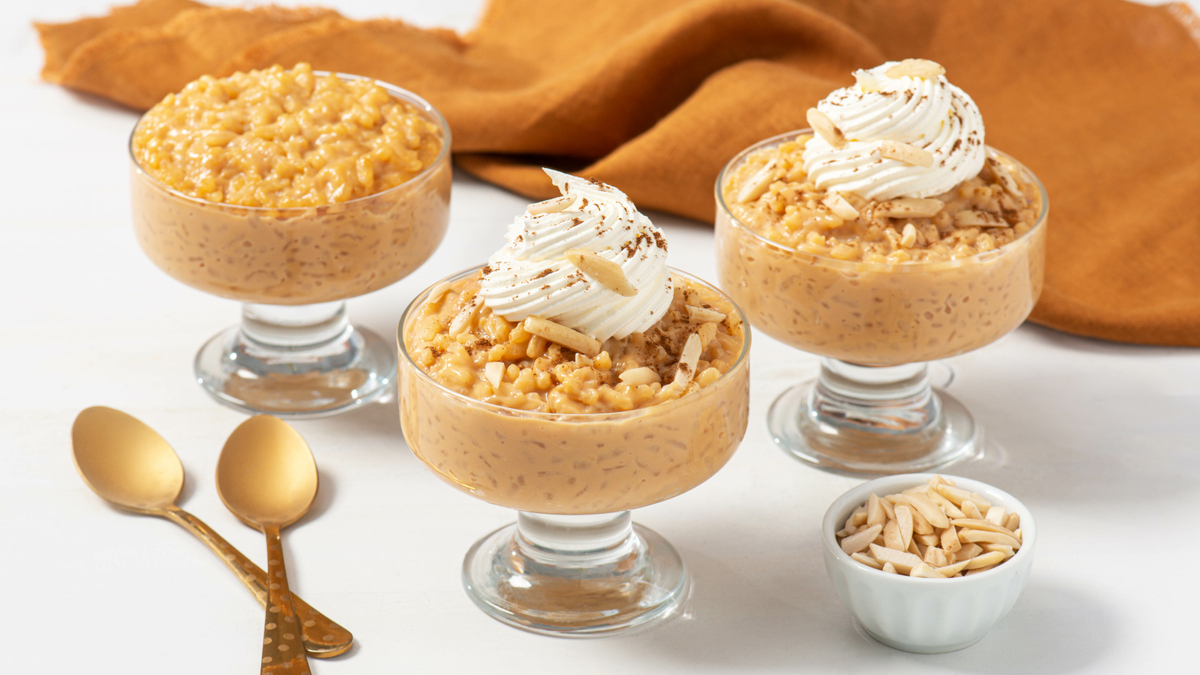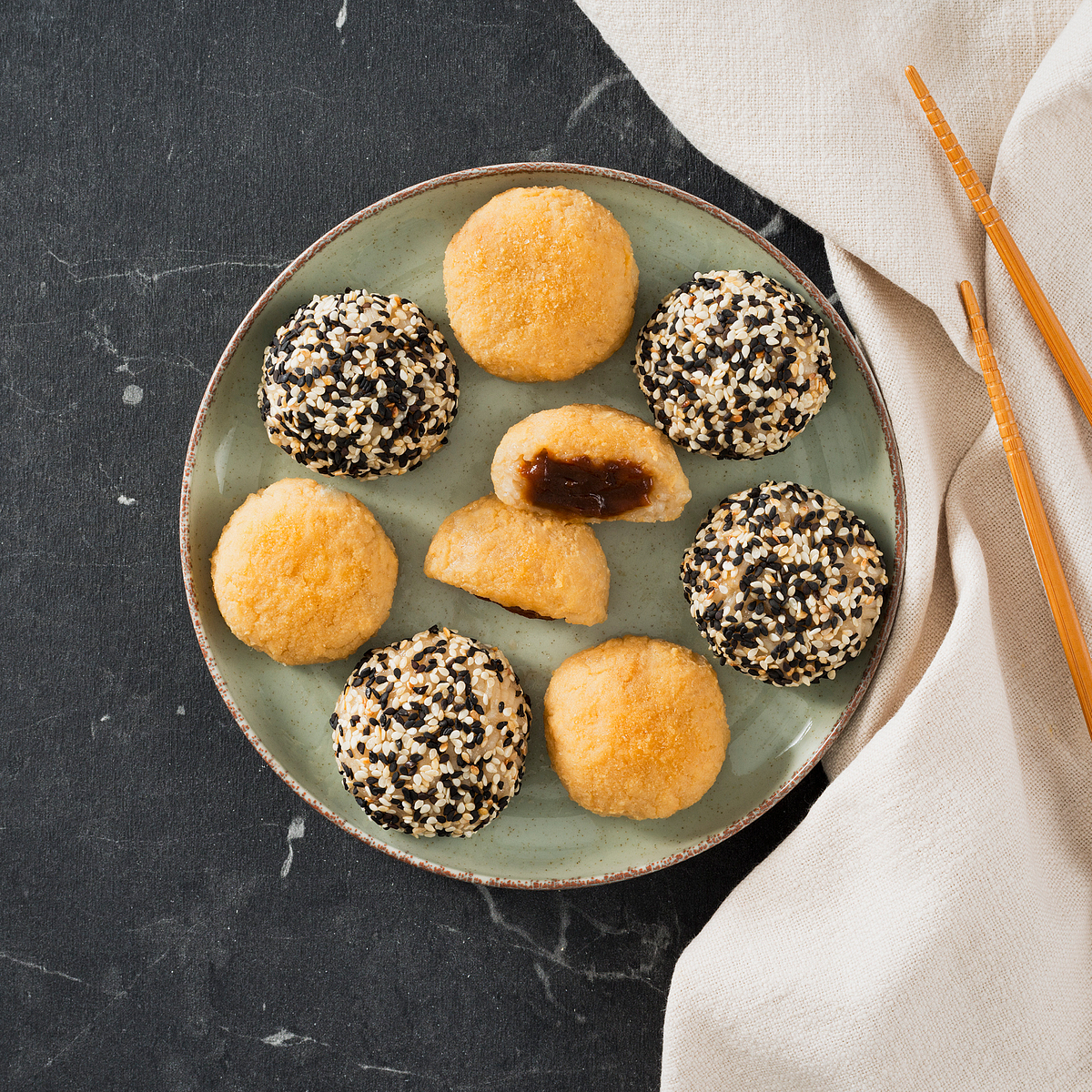Sticky rice is an integral ingredient in a vast number of tantalizing dishes, from dumplings and sushi to caramelized, coconutty biko. But if you want to eat it, you first have to learn how to make sticky rice that’s chewy, satisfying and has the perfect texture to bring a world of recipes to life!
So, what is sticky rice? How do you cook sticky rice? What are some can’t-miss sticky rice recipes? Read on to discover all the ins and outs of this unique and delicious, distinctive short-grain rice variety.
What is Sticky Rice?
Whether you’re new to cooking or have years of experience sautéing, julienning, braising and searing, you may be surprised to know that there are thousands of types of cultivated and wild rice in the world. These different rice varieties are categorized by their grain length, starch content, color and degree of milling.
What kind of rice is sticky rice? Also known as glutinous, sweet or waxy rice, sticky rice is a short- or medium-grain Japonica variety that is rounder and thicker than long-grain rice. High in amylopectin, a kind of starch, this type of rice is cherished for the way it sticks together when cooked. Beyond its recognizable texture, sticky rice is also delicately sweet and aromatic.
Varieties of Sticky Rice
Many different varieties of rice can be classified as sticky rice. These range from medium-grain Calrose rice to Southeast Asian purple rice. Despite their similarities, each type of sticky rice has unique characteristics that make it perfect for specific uses.
Black or purple glutinous rice – The short-grain type of black rice (a long-grain variety also exists), is native to Asia. Also known as forbidden rice, this intensely hued, whole-grain rice variety can be used for savory and sweet dishes.
Japanese sticky rice – Not to be confused with sushi rice, Japanese sticky rice is a short-grain variety that is intensely chewy. It is used in a variety of dishes, such as mochi and okowa.
Thai sweet rice – A staple in Thai cuisine, this type of rice grows in northern Thailand and Laos. Soft with a delicate chew, it is used in a wide range of dishes, such as larb, lettuce wraps and mango sticky rice
Calrose rice – Developed in California, Calrose rice is a medium-grain type of Japonica rice. Sought out for its soft texture, it’s enjoyed in stir-fries, sushi and as a side dish.
How to make Sticky Rice with Sushi Rice: Easy Sticky Rice Recipe
Though not technically a glutinous rice variety, sushi rice can be used to make recipes that call for sticky rice, thanks to its short grain and high starch content. Follow these steps to make sticky rice using top-quality RiceSelect® Sushi Rice.
Why Rinse Sushi Rice?
The first step to soft and chewy, delicately clumpy rice is soaking the grains in cool water. Soak 1 cup of rice for 15-30 minutes before cooking.
Next, it’s important to rinse the grains in several changes of cool water. Washing off excess starch from the rice helps to ensure that the rice cooks up separately and not as a clump. Rinse rice in cool water until the water runs clear.
Rice-to-Water Ratio
Though RiceSelect® Sushi Rice is generally cooked in a saucepan with a 1.5:1 ratio of water to rice, when using it to prepare sticky rice it’s important to use a 1:1 ratio.

How to Cook Sticky Rice
Sticky rice can be prepared in myriad ways, including in a saucepan, by steaming and in a rice cooker.
In Thailand, it’s traditional to prepare sticky rice by steaming it. This method requires that the sticky rice be soaked for several hours prior to steaming. It also calls for a bamboo or stainless steel steamer. In this method, sticky rice is placed into cheesecloth lining a steamer basket, and is cooked for 20 minutes, until tender.
As mentioned above, sticky rice can also be prepared in a saucepan. This technique is similar to the one used to make white, brown or other varieties of rice and relies on the correct water-to-rice ratio to perfect.
Hot soaking is another method for cooking sticky rice. For this method, the rice is first rinsed in warm water until the water runs clear. Then, it’s placed in a bowl and covered with boiling water. After soaking for 20 minutes, the rice is rinsed again, then steamed as above.
Wondering how to make sticky rice in a rice cooker? To start, place 1 cup of rice and 1 1/4 cups of water into the rice cooker. Let the rice/water mixture soak for 45 minutes to a few hours. Season with salt, if desired, and cook. For stickier results, prepare the rice ahead of time and let it sit once it has finished cooking.
How to Make Regular White Rice Sticky
Long-grain white rice isn’t recommended for making sticky rice. As discussed, this is because it lacks the right amount of amylopectin starch, so won’t yield the desired results. In a pinch, use short-grain white rice, such as RiceSelect® Arborio Rice, which is starchy like glutinous rice, though not as chewy and sticky.
To make sticky rice using arborio, begin by rinsing, then soaking the rice. Then, either steam the rice, as above, or cook in a saucepan using a 1:1 ratio of water to rice.
Make Rice Sticky Like a Pro
Now that you’ve learned the basics, learn how to trouble-shoot your sticky rice, avoiding common mistakes so that you have perfect results, each and every time.
Undercooked rice – If your sticky rice is still hard when the timer beeps, you can continue to cook it until it has softened. If using a saucepan, simply add a little boiling water to the rice and continue to cook for a few minutes until soft. If steaming the rice, add a few tablespoons of water to the steamer and continue to cook for a few minutes. Allow the rice to rest, then test it. Repeat until the rice is tender.
Sticky rice is too soft – Using too much water or cooking the rice for too long can result in sticky rice that comes out mushy. Using the correct ratio of water to rice, plus cooking the rice for the correct amount of time are integral to perfect sticky rice. Rinsing and soaking can also help prevent mushy sticky rice.
Can I soak the rice in advance and cook it later? – Many experts actually recommend this method! Due to time constraints, many recipes state that rice should be soaked for 30 minutes to an hour. Soaking overnight, however, yields even softer, chewier results.
Sticky rice is sticking to the steamer – To prevent sticky rice from sticking to the steamer basket as it cooks, begin by lining it with damp cheesecloth.
Our Favorite Sticky Rice Recipes
As evidenced by countless sticky rice recipes, this ingredient has unlimited potential! A must-have with Thai curries and for Chinese lo mai fan, sticky rice is also integral to myriad appetizers and desserts. Now that you confidently know how to make sticky rice, it’s time to test out some of our favorite ways to use it!
Salmon Poke Bowl with Sushi Rice
Fresh and colorful, this layered bowl makes a welcome lunch or dinner. Delicate and fragrant, with satisfying texture, premium RiceSelect® Sushi Rice is a delicious starting point for this customizable dish.
Easy One Pot Japanese Rice Recipe
Despite its quick cook time, this complete meal is a satisfying dinner you’ll want to turn to every night of the week! Craving a change? Simply sub the chicken for shrimp or more vegetables.
Crispy Tofu Rice Bowl with Mango Salsa
A great option for meatless Mondays, these vegan bowls rely on sweet RiceSelect® Sushi Rice and golden tofu cubes for their depth of flavor and tempting texture. Zippy mango salsa adds a fruity finish!
Crispy Rice Spicy Salmon
A brush of oil and the heat of an air fryer turn sticky rice into crispy rice in this simple recipe. Topped with seasoned salmon, these bite-size snacks are impossible to resist.
Sticky Rice Desserts
Fruity Desserts
When thinking about sweet rice, what’s the first sticky rice recipe that comes to mind? For most people, it’s Sweet Sticky Rice with Mango and Coconut! Lush and tropical, this Thai street food is internationally loved as a quick breakfast, afternoon pick-me-up and simple dessert. While it’s traditionally topped with ripe mango, you can top this treat with whatever fresh fruit you’re craving, such as berries, papaya, banana or kiwi.Sticky rice can also be used to give classic desserts a modern upgrade. For a tasty twist on bananas foster, try syrupy, satisfying Sticky Rice with Caramelized Bananas.
Baked Desserts
Classic biko is an irresistible Filipino Sticky Rice Cake that is packed with flavor and never fails to please. Keep coconut on hand, and you’ll be able to whip up this sweet treat in no time. Just keep in mind that you’ll need both coconut milk and coconut cream to make this decadent dessert.
Coconut Milk: Coconut milk generally consists of 1 part coconut meat to 2 parts water. It can serve as a lactose-free substitute and is typically used in bases for soups, stews and Thai curries.
Coconut Cream: Coconut cream has a much thicker consistency than coconut milk as it has 4 parts shredded coconut to 1 part water. Rich and silky, it’s an ideal ingredient for creamy desserts.
Spiced Desserts
This Dulce de Leche Rice Pudding is packed with sugar and spice and everything nice. Adding cinnamon to this rice pudding infuses it with a fragrant finish that complements the sweet aromas of delicious dulce de leche.
Bite-Sized Desserts
Japanese-Style Sweet Rice Balls are soft, sweet treats that are perfect for parties. Similar to botamochi and ohagi, which are made to celebrate the spring and autumn equinoxes, these sweet rice balls are a riff on a specific style of mochi.
Benefits of Cooking with Sushi Rice
RiceSelect Sushi Rice is high-quality short-grain rice crafted using two varieties of sushi rice, Koshihikari and Calihikari. Its sweet, fragrant flavor and soft, sticky texture make it perfect not only for sushi dishes, but also sweet desserts like this Key Lime Rice Pudding Pie.
How to Create a Sushi Menu
With RiceSelect® Sushi Rice on hand, this is the perfect opportunity to create your own sushi menu and host a casual get-together. Though the mystique around how to make good sushi puts a lot of people off, all that's required for success is patience, the right ingredients and a little practice.
In order to make good sushi you'll need:
RiceSelect® Sushi Rice
rice wine powder or vinegar
bamboo mat
plastic wrap
nori (seaweed sheets)
soy sauce
toasted sesame seeds
Sriracha chili sauce
Once you’ve covered the basics, and know how to make sticky rice for sushi, all you need are some fantastic recipes to tackle! Beyond the classics, such as nigiri-inspired Shrimp Finger Sushi, try prosciutto-wrapped Italian Sushi Rolls. For the vegetarians, add some Vegetarian Sushi Rolls into the mix. With RiceSelect® Sushi Rice and a little creativity, you can explore the delicious, adaptable world of sushi-making at home.

